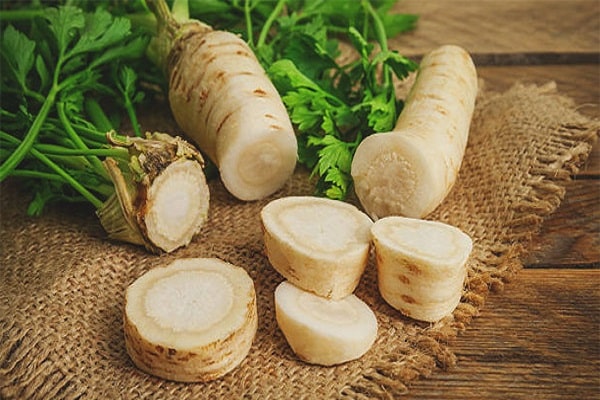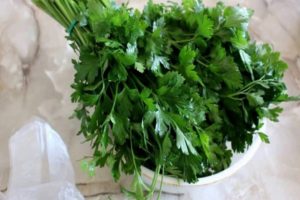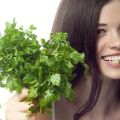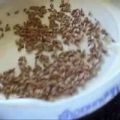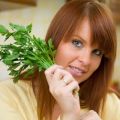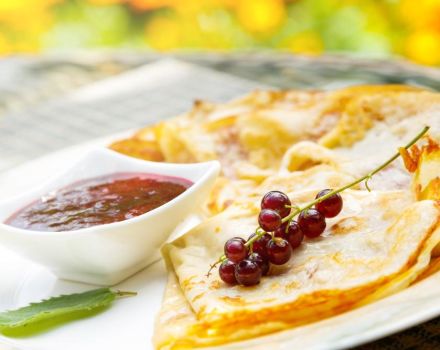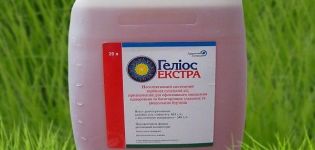Description and characteristics of parsley, the best varieties for open ground
Greens are grown in the garden in order to spice up everyday dishes, make the sauce sharper, and the salad tastier. Planting parsley in summer cottages, vegetable gardens are quite common. The spice is grown in all regions, because it is unpretentious in its care, it is not afraid of low temperatures. In addition to the specific aroma and taste, the herb contains many elements useful for human health. To grow a vegetable plant, you need to know the varieties of parsley, the peculiarities of their development.
Plant characteristic
The spicy herb belongs to biennial crops. In the first year, leaves and a stem are formed, and a root is formed for consumption, in the second, the seeds of the plant. A vegetable belonging to the Umbrella is cultivated in two main types. Those that produce fragrant leaves, and others that form a root vegetable, used for culinary and medicinal purposes. Some types of parsley produce a strong curly rosette of leaves. They are used to decorate salads, snacks.
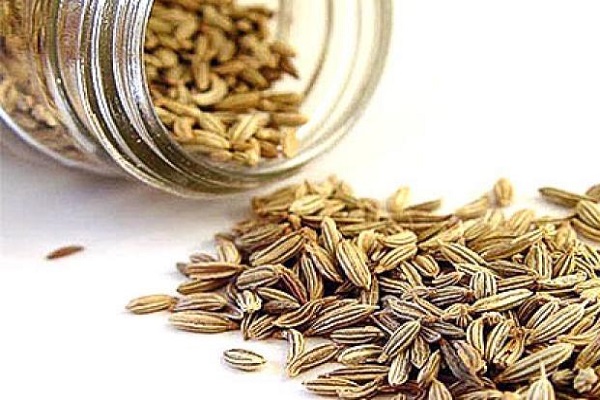
A perennial culture is characterized by:
- fleshy root with a core 20-30 centimeters long;
- branching of upright shoots;
- glossy surface of the sheet plate;
- resistance to low temperatures, drought;
- unpretentious care.
Parsley is a spicy herb. Many people wonder if this is a vegetable or not.
In many respects, parsley is considered a vegetable, because it is grown both for the sake of fragrant leaves and a yellowish root crop.
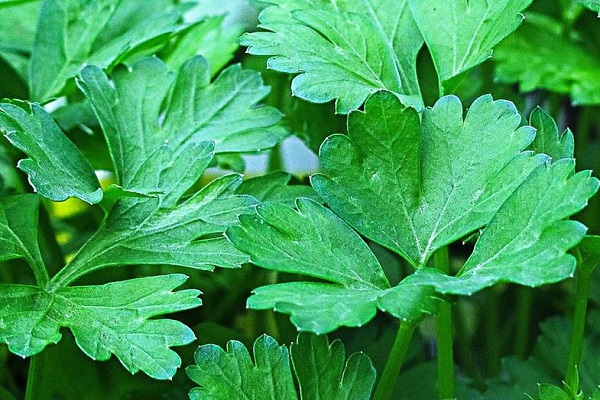
Leaf parsley varieties
Among the types of parsley, leaf is common. It is grown everywhere. She manages to ripen even in regions with a cold climate, if you pick up varieties with early ripening. For the Moscow region, both mid-season and late-season specimens are suitable. They will have time to give a rich harvest of greens for the winter.
Leafy vegetable varieties are famous for their juiciness, brightness of leaves, shoots. You want to admire this greenery when the twigs decorate the festive table. It is useful for those who suffer from high blood pressure, cardiac edema. As a diuretic, herbal infusions help with kidney dysfunction. In cosmetology, leaf parsley is used to remove freckles. Decoctions of herbs cleanse the skin of acne, demodicosis.
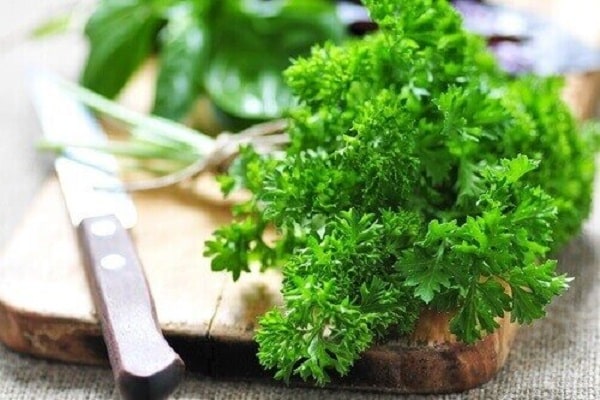
Bogatyr
Large dark green leaves have a rosette of this variety of parsley. The plant differs:
- shade tolerance;
- resistance to wet rot, sclerotinia;
- a large outlet 25-40 centimeters high;
- pronounced aroma;
- unpretentious care;
- high yield up to 3 kilograms of greenery per square meter.
Grass is grown in the open field, collecting several harvests of succulent shoots during the season. To achieve technical maturity, a vegetable needs 60-65 days after germination. You can plant the variety in the winter.
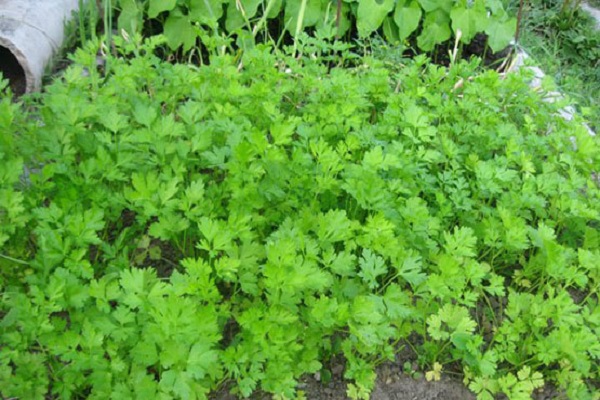
Carnival
A leafy herb variety with its large rosette of leaves creates a celebration of greenery in the garden. The leaves of the plant are dark in color with deep cuts, have a smooth surface and smell good. The advantages of the variety include its ability to form a large amount of green mass. Greens with excellent presentation in bunches are quickly sold.
After cutting, the plant recovers quickly.
The variety is sown on fertile soils with good water and air permeability. When loosening the soil, regularly weeding, thinning, you can harvest the grass in 90 days.

Curly
The leafy parsley species is represented by the curly variety. In addition to the excellent spicy taste, greens can be a decoration of the garden. Curly leaves with a dense rosette look decorative. After cutting, they are used as a decoration for salads, holiday dishes. Dense leaves retain a fresh, attractive appearance for a long time, do not fade.
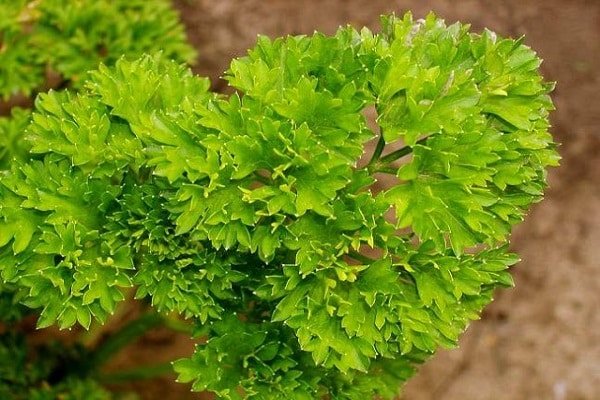
Aster
Curly parsley created by Czech breeders is recommended for cultivation both in summer cottages and on farm plantations.
Astra parsley is different:
- a raised rosette of leaves;
- large leaves, delicate, strongly corrugated;
- inedible root, tough;
- the onset of technical maturity in 55-60 days;
- harvest up to 5 kilograms.
The spicy herb can be grown both outdoors and indoors.
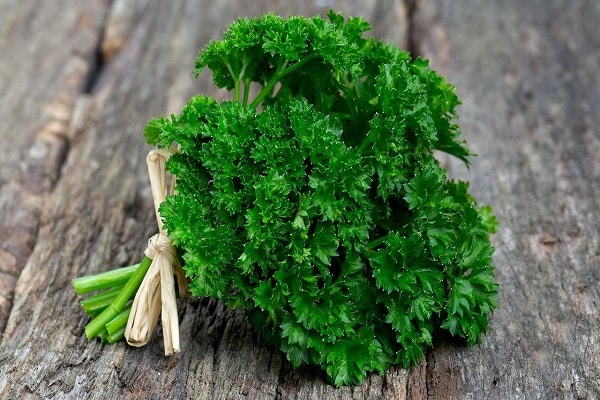
Fragrant
Curly parsley of this variety is distinguished by its early maturity. A plant with a raised dense rosette of light green leaves has thick long petioles. The herb is distinguished by a strong spicy aroma. From one bush, you can cut up to 40 grams of green mass, with good lighting - up to 100 grams.
Parsley is distinguished by the rapid build-up of bright greens after cutting. They use the harvested crop for pickles, marinades, as a seasoning.

Esmeralda
Esmeralda's curly leaves are prized for their ability to form a dense rosette over 20 centimeters high. A culture needs 65-70 days to reach technical maturity.
The best sowing time for parsley is the end of April - early May. In this case, the vegetable will have time to please with greens several times per season. The readiness of the leaves for consumption is determined by the height of the petioles with leaves of 10-12 centimeters. Greens are prepared for the winter during the budding period. You can cut up to 50 grams of grass from one bush. The yield from 1 square meter reaches 1.2 kilograms.
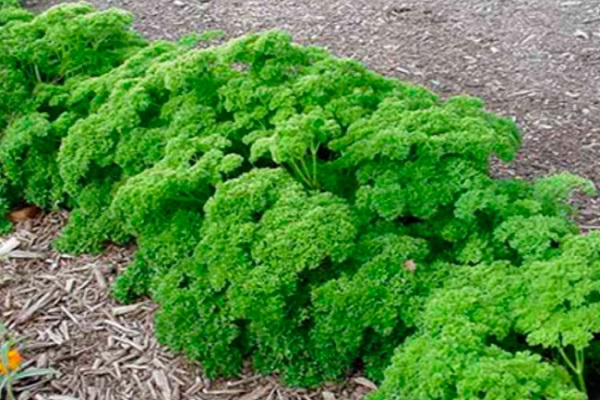
Bravo
Russian curly parsley Bravo is unpretentious in care, and after 65 days it gives juicy greens to the table. The beauty of a rosette with curly leaves combines well with the delicate scent of a plant.
To preserve the integrity of the vegetable bush, it is necessary to cut the petioles with leaves to the base. Then the recovery will go faster, and the yield of the spicy grass will increase.

Breeze
A striking representative of parsley, which has a dense head of strongly corrugated leaves, is the Breeze variety. The cylindrical petioles of the plant reach a height of 25-35 centimeters. An upright leaf outlet is lifted up to 0.5 meters. The garden bed is decorated with dark green shiny leaves with wavy edges and scalloped feathers.
Delicate herb greens are suitable for cooking, suitable for processing. Its aroma will decorate marinades and pickles.
Thanks to the thick, shortened stalk, parsley retains freshness for a long time and tolerates transportation. If stored properly, the herb can be consumed fresh for up to a week.

Gloria
From germination to maturity of leaf parsley - 60-65 days. In the rosette of the plant, up to 20-25 leaves are formed, dark green, fragrant, with large portions of the plate. After cutting the petioles, lateral shoots are quickly formed, therefore, for consumption it is better to take the shoots from the outside.
Cut as needed, when the stem reaches a height of at least 10 centimeters. Yields of green mass reach 1.5 kilograms per square meter.
The variety is suitable for planting in April and before winter, in October-November.
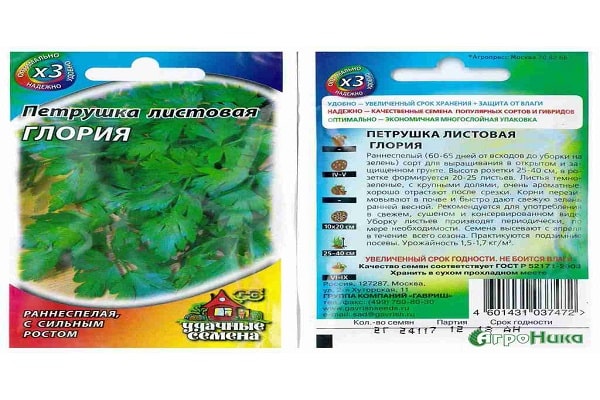
Rialto
Parsley of the Dutch selection Rialto belongs to the late-ripening, as it takes 95-105 days to reach technical maturity.
A feature of the plant is its resistance to disease. In vegetable crops, the leaves rarely turn yellow, even during severe drought. They remain bright green, smooth, tender for a long time. Grow back quickly after cutting.
Grass is cultivated throughout the season, sowing in spring, summer and before winter. The main thing is to prepare a site for odorous grass with fertile soil. In the warm season, the vegetable is planted in moist soil, and in the fall - with dry seeds. So that the seedlings appear faster, they cover the plantings with a film.

Titanium
One of the productive varieties of leaf parsley is Titan of Dutch selection. Vegetable crops have average ripening times - up to 70 days after germination.
Parsley differs:
- vertical arrangement of the outlet;
- numerous leaves of a dark green tone;
- large leaf surface;
- delicate taste combined with a persistent spicy aroma;
- the ability to retain a bright color after processing.
Loose and fertile soils are suitable for a spicy culture. The grass gives rich yields with regular thinning, weeding, watering, loosening.
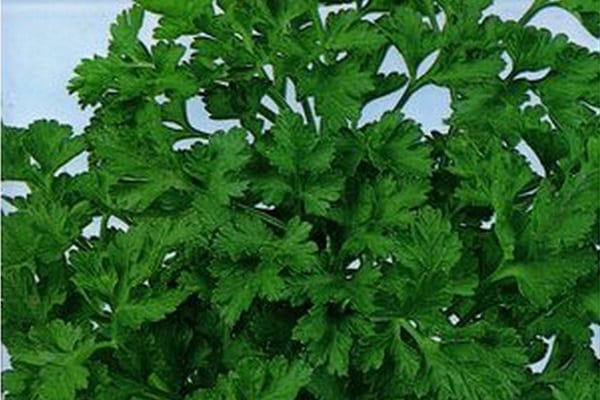
Station wagon
The vegetable plant belongs to the late-ripening species, as it ripens from 90 to 149 days, depending on the weather and climatic conditions of cultivation.
After the formation of a semi-vertical rosette with large dark green leaves, you can cut the grass for consumption. After cutting, the bush is quickly replenished with young petioles.
A versatile vegetable gives a mass of greens weighing up to 60-80 grams from one bush. In addition to green leaves, juicy, tender roots are also obtained from the plant, therefore it is classified as a universal species.
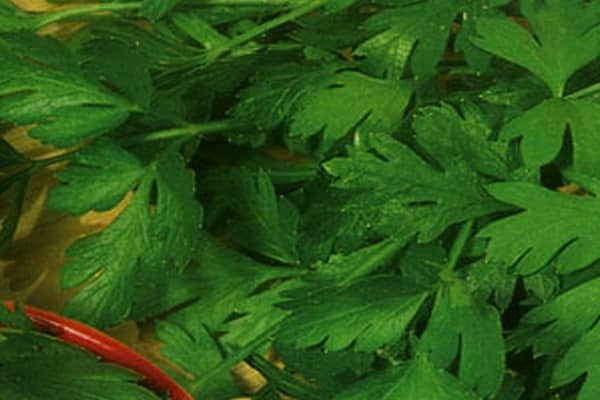
Sandwich
The most delicious product in summer is Sandwich parsley. The variety ripens in 65-80 days, intensively growing greens.
Considering the juiciness and unusual smell of petioles with a semi-vertical rosette of leaves, it is necessary to use a spicy herb to decorate salads, sandwiches, main courses. There are many vitamins and useful microelements in the leaves and medium-thick petioles. Collect greens as they ripen throughout the summer. Shoots remain fresh for a long time. They can only be removed completely at the first frost. The vegetable is famous for its harvest of greens up to 4.2 kilograms per square meter.
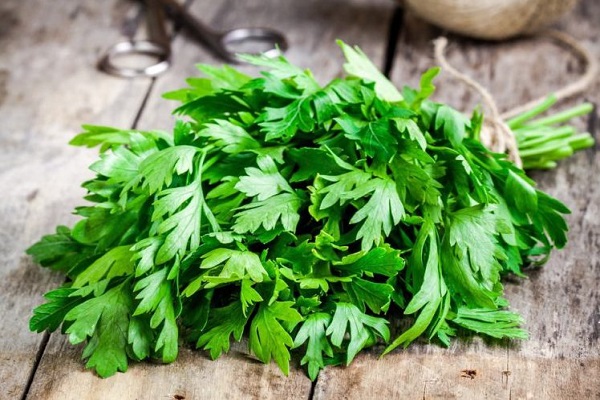
Italian giant
One of the earliest types of vegetable crops produces spicy herbs in 60 days. Powerful rosettes of plant leaves up to 60 centimeters high. Large fragrant leaves cut by the summer resident remain fresh for more than a week. About the Giant of Italy, we can say that this is one of the cold-resistant varieties. It can be planted in November before winter. Dark greens are cut from April to August. The amount of mass ranges from 2.5 to 3 kilograms per square meter.
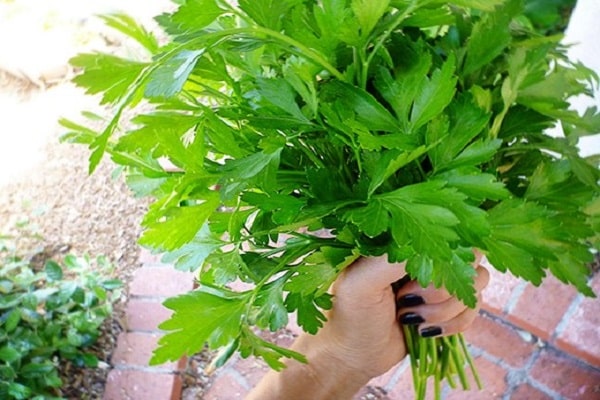
Mooskrause
German breeders have delighted gardeners with early ripening parsley. Cutting petioles with leaves is usually carried out in 1.5 - less than 2 months after germination. The spicy culture is distinguished by resistance to cold and drought. It is best to grow the vegetable in a greenhouse to get a large crop of grass. The plant is useful for its rich composition of mineral salts and vitamins. It can be consumed fresh.
A feature of small, green leaves is their ability to stay fresh for a long time, not to wither, not to change their bright color. Their corrugated edges will become a decoration of the garden bed.

Beads
Parsley ripens in 55-60 days from germination to suitability for food. The plant with a half-raised rosette of green leaves reaches a height of 40 centimeters. The tenderness and aroma of thin petioles with medium-sized leaves are amazing. The variety is famous for its versatility of use, with a yield of up to 2 kilograms from 1 square meter of the garden. The leaves are frozen, dried, adding as a spice to soups, sauces, fish and meat dishes. At the same time, parsley retains its beneficial properties and unchanging aroma.
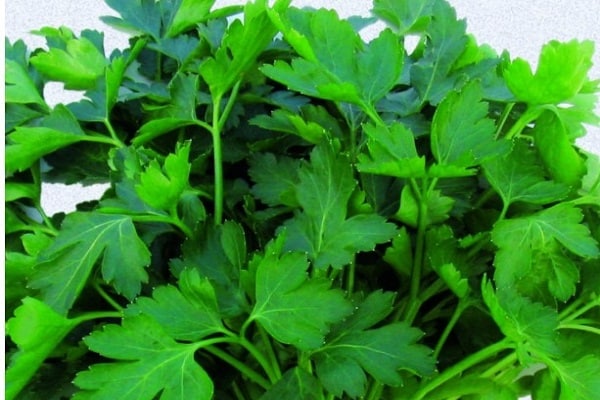
The most popular varieties of root parsley for outdoor use
Parsley is grown not only for greens, but also to obtain tender, juicy roots with high nutritional value. Greenery in such plant species is small, it is harsh and not as lush as in leafy spice.
Among the best varieties of root parsley those in which the root has a juicy pulp, sweet-spicy taste.
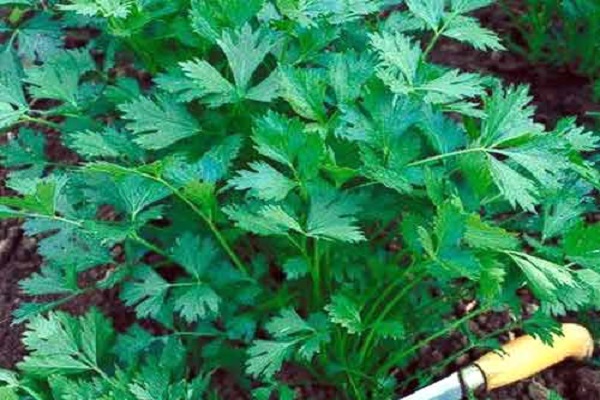
Sheet
In an ordinary vegetable plant, everything goes for food: both medium-sized leaves and a root. The variety ripens within 70-80 days. Seeds are often used for growing on the balcony, in the apartment. The culture is famous for its dark green dissected leaves and a small yellowish root. After harvesting the vegetable, the crop is canned and frozen. The spice remains fresh in the refrigerator for up to 1-2 weeks.
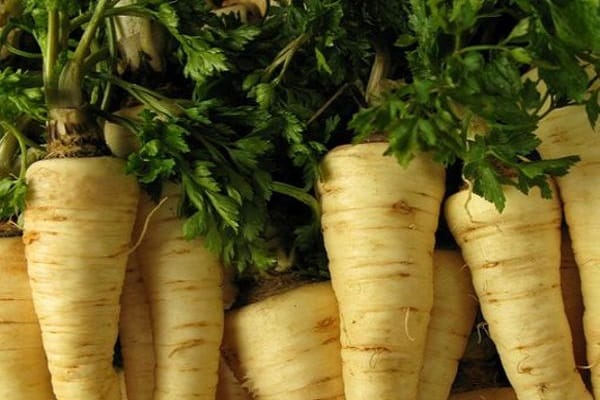
Berlin
In addition to curly leaves, the spice of the German breeding variety also gives succulent conical roots weighing up to 70 grams. It is distinguished by a root vegetable 20 centimeters long, white flesh, pleasant taste, unique aroma.
The growing season in Berlin is 90-110 days. The fruits are used for canned and fresh consumption. Once cut into pieces, they are frozen or dried. A root vegetable can improve the taste of soups, fish and meat dishes.
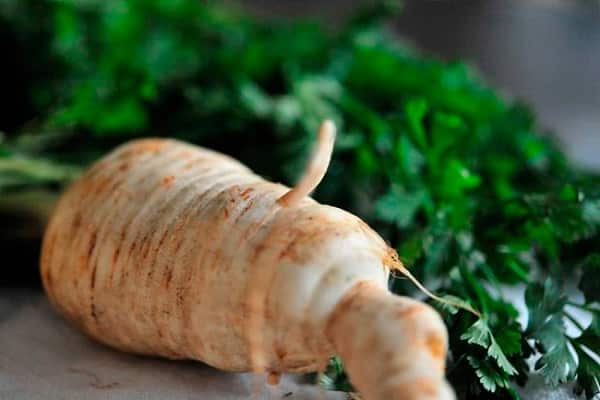
Berlin root
For fresh and canned consumption, a vegetable crop is grown - Belinskaya root parsley. The advantages of cultivating spicy herbs are:
- resistance of the variety to cracking;
- high keeping quality;
- juicy flesh of a creamy root vegetable weighing up to 110 grams;
- good commercial qualities.
Root parsley reaches maturity in 140-180 days if grown in open beds. Up to 6 kilograms of valuable nutritious product can be harvested from a square meter.
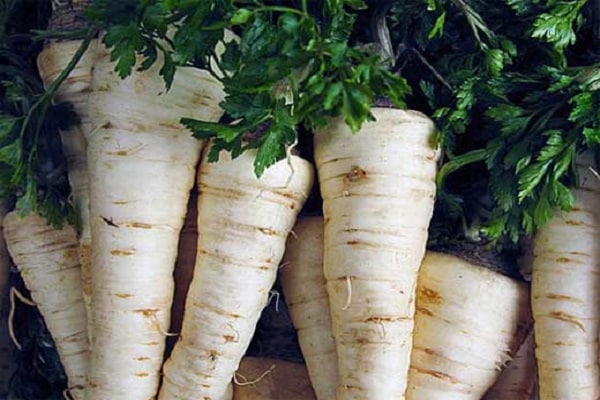
Eagle
Root parsley of this variety is also suitable for obtaining first-class greens and crunchy root vegetables, which go 30 centimeters deep. A vegetable was bred in Holland. Its rosette is densely leafy with dark green dissected plates, and the root is smooth, white, of excellent taste and persistent aroma.
At Eagles, both underground and aboveground parts of the plant are processed. If you plant seeds of umbrella spice in May, then in 115 -125 days you will get a harvest of fruits up to 2 kilograms.
A feature of the plant is the rapid recovery of shoots after cutting. The resistance of the variety to frost and heat is noted.
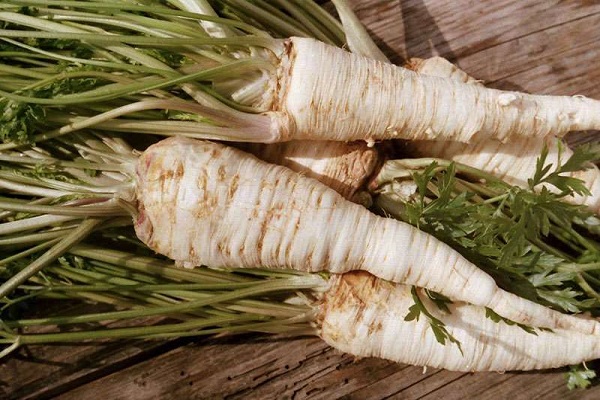
How to use parsley root properly
Many summer residents do not know how to properly use the parsley root crop, what are its benefits.
Like the leaves, the root of the plant:
- pickle;
- boiled;
- added to salads in grated form;
- season canned food for the winter.
To properly prepare the root vegetable of the herb, it is removed from the soil, washed thoroughly. Remove the skin from the fruit before cooking.

The plant root is useful for:
- diseases of the genitourinary system in men;
- hypertension, heart disease;
- bowel disorders;
- edema as a diuretic;
- problems with lactation;
- elevated blood glucose levels.
Rinse the head with a decoction of the root vegetable, freeing from dandruff. Its constant use strengthens hair, eliminates fragility.
The infusion is prepared by dissolving 2 tablespoons of root powder in a glass of hot water. The drink is prepared for 30 minutes. It can be dissolved in cold water, but you need to insist for 14 hours. Drink 100 grams of medication daily for a month. The drink will help cleanse the blood from cholesterol, strengthen blood vessels, heart. In addition, efficiency will increase, immunity will increase.
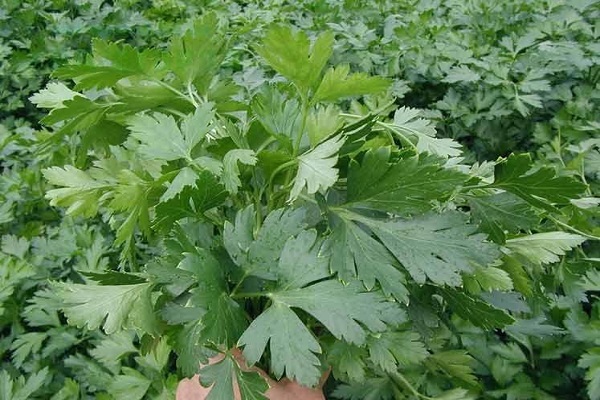
The root is dried for the winter. Having cut the fruits into 4 mm cubes, they are placed under a canopy or in a well-ventilated room, protecting them from direct sunlight.
If desired, dried sticks are ground to a powder in a blender and stored in a glass jar, adding spices to various dishes or preparing infusions.
Fresh roots are best placed in the ground at a temperature of 5-6 degrees Celsius.

Frozen roots are harvested for the winter. For this, the pulp is cut into circles or passed through a meat grinder, laid out in bags and sent to the chamber.
You can prepare decoctions from root vegetables and freeze them. It is good to wipe the face with healing cubes, toning the skin, cleansing it.
